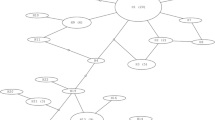Abstract.
A total of 112 stray and semi-stray dogs (Canis familiaris) from four different geographical areas in northern and middle Jordan were necropsied to evaluate the prevalence and intensity of intestinal helminthiasis. Of these, 33 dogs (29.5%) were infected with Echinococcus granulosus and 61 (54.5%) with other Taenia species. Other cestodes found included Dipylidium caninum in 36 dogs (32.1%), Diplopylidium in 6 dogs (5.4%), Mesocestoides sp. in 3 dogs (2.7%) and Joyuexiella in 1 dog (0.9%). Toxocara nematodes were found in 10 dogs (9.2%) and only 1 dog was positive for acanthocephalans. Among the dogs infected with E. granulosus, 8 dogs (24.2%) had a worm load higher than 1,000 worms. The ratio of infected male to female dogs was 1.9:1.0. Strain analysis of E. granulosus using random primers revealed the dominance of the G1 strain (sheep/dog strain) in the region. Only one dog harbored another E. granulosus strain, which resembled the G4 strain pattern.

Similar content being viewed by others
References
Abdel-Hafez SK, Kamhawi SA (1997) Cystic echinococosis in the Levant countries (Jordan, Palestinian Autonomy, Israel, Syria, and Lebanon). In: Anderson FL, Ouhelli H, Kashani M (eds) Compendium on cystic echinococcosis in Africa and in Middle Eastern countries with special reference to Morocco. Brigham Young University, Provosto, Utah, pp 292–316.
Abo-Shehada MN, Ziyadah Y (1991) Prevalence of endoparasites in dog fecal deposits in Jordan. J Helminthol 65:313–314
Ajlouni AQ, Saliba EK, Disi AM (1984) Intestinal cestodes of stray dogs in Jordan. Z Parasitenkd 70:203–210
Benbrook EA (1963) Outline of parasites reported from domesticated animals in North America, 6th edn. Iowa State University Press, Des Moines
Bowles J, McManus DP (1993) Molecular variation in Echinococcus. Acta Trop 53:291–305
Coulibaly ND, Yameogo KR (2000) Prevalence and control of zoonotic diseases: collaboration between public health workers and veterinarians in Burkina Faso. Acta Trop 76:53–57
El-Shehabi FS, Abdel-Hafez SK, Kamhawi SA (1999) Prevalence of intestinal helminths of dogs and foxes from Jordan. Parasitol Res 85:928–934
El-Shehabi FS, Kamhawi SA, Schantz PM, Craig PS, Abdel-Hafez SK (2000) Diagnosis of canine echinococcosis: comparison of coproantigen detection with necropsy in stray dogs and red foxes from northern Jordan. Parasite 7:83–90
Fischer P, Yocha J, Rubaale T, Garms R (1997) PCR and DNA hybridization indicate the absence of animal filariae from vectors of Onchocerca volvulus in Uganda. J Parasitol 83:1030–1034
Gasser RB, Chilton NB (1995) Characterisation of taeniid cestode species by PCR-RFLP of ITS2 ribosomal DNA. Acta Trop 59:31–40
Haridy FM, Ibrahim BB, Morsy TA (2000) Sheep–dog–man. The risk zoonotic cycle in hydatidosis. J Egypt Soc Parasitol 30:423–429
Hoida G, Greenberg Z, Furth M, Malsha Y, Craig PS, Schantz PM, Sneir R, el-On J (1998) An epidemiological survey of Echinococcus granulosus and other helminths in animal populations in Northern Israel. J Helminthol 72:127–131
Lightowlers MW (1990) Immunology and molecular biology of Echinococcus infections. Int J Parasitol 20:471–478
McManus DP, Ding Z, Bowles J (1994) A molecular genetic survey indicates the presence of a single, homogeneous strain of Echinococcus granulosus in north-western China. Acta Trop 56:7–14
Meyer MC, Olsen OW (1980) Essentials of parasitology. Brown, Dubudue, Iowa
Molan AL (1993) Epidemiology of hydatidosis and echinococcosis in Theqar Province, southern Iraq. Jpn Med Sci Biol 46:29–35
Reddy YA, Rao JR, Butchaiah G, Sharma B (1998) Random amplified polymorphic DNA for the specific detection of bubaline Echinococcus granulosus by hybridization assay. Vet Parasitol 79:315–323
Sambrook J, Fretsch F, Maniatis T (1989) Molecular cloning: a laboratory manual. Cold Spring Harbor Laboratory Press, Cold Spring Harbor, N.Y.
Schantz PM (1994) Of worms, dogs, and human hosts: continuing challenges for veterinarians in prevention of human disease. J Am Vet Med Assoc 204:1023–1028
Schmidt GD (1970) How to know the tape worm. Brown, Dubudue, Iowa
Scott JC, McManus DP (1994) The random amplification of polymorphic DNA can discriminate species and strains of Echinococcus. Trop Med Parasitol 45:1–4
Scott JC, Stefaniak J, Pawlowski ZS, McManus DP (1997) Molecular genetic analysis of human cystic hydatid cases from Poland: identification of a new genotypic group (G9) of Echinococcus granulosus. Parasitology 114:37–43
Thompson RC, Lymbery AJ (1988) The nature, extent and significance of variation within the genus Echinococcus. Adv Parasitol 27:209–258
Thompson RC, Lymbery AJ (1996) Genetic variability in parasites and host–parasite interactions. Parasitology 112:7–22
Yamaguti S (1961) The nematodes of vertebrates. (Systema helminthum, vol 3) Interscience, New York
Zhang LH, Chai JJ, Jiao W, Osman Y, McManus DP (1998a) Mitochondrial genomic markers confirm the presence of the camel strain (G6 genotype) of Echinococcus granulosus in northwestern China. Parasitology 116:29–33
Zhang LH, Islami A, Hosseini SH, McManus DP (1998b) Identification of the presence of two distinct strains of Echinococcus granulosus in Iran by mitochondrial DNA markers. Am J Trop Med Hyg 50:171–174
Acknowledgements.
The authors which to thank A. Qaqish, F. Atrouz, N. Singilawy and L. Al-Shalabi for technical assistance. This work received financial support from the European Commission (EC Contract IC18-CT98-0354) and Yarmouk University Research Council.
Author information
Authors and Affiliations
Corresponding author
Rights and permissions
About this article
Cite this article
Al-Qaoud, K.M., Abdel-Hafez, S.K. & Craig, P.S. Canine echinococcosis in northern Jordan: increased prevalence and dominance of sheep/dog strain. Parasitol Res 90, 187–191 (2003). https://doi.org/10.1007/s00436-002-0793-2
Received:
Accepted:
Published:
Issue Date:
DOI: https://doi.org/10.1007/s00436-002-0793-2




